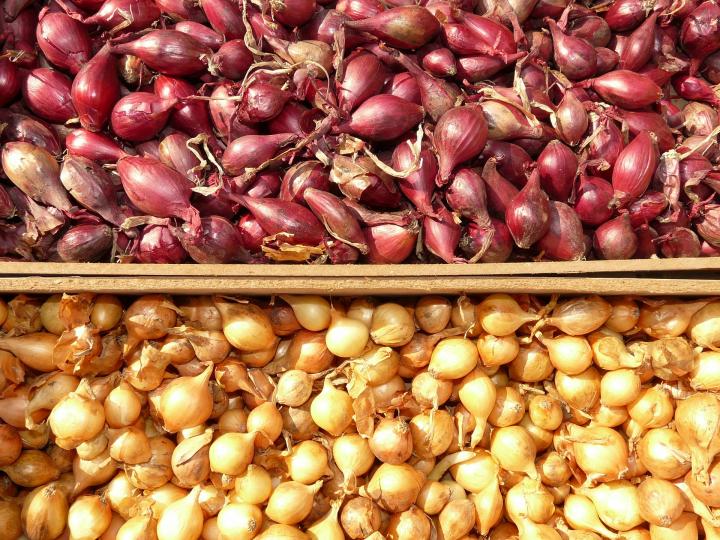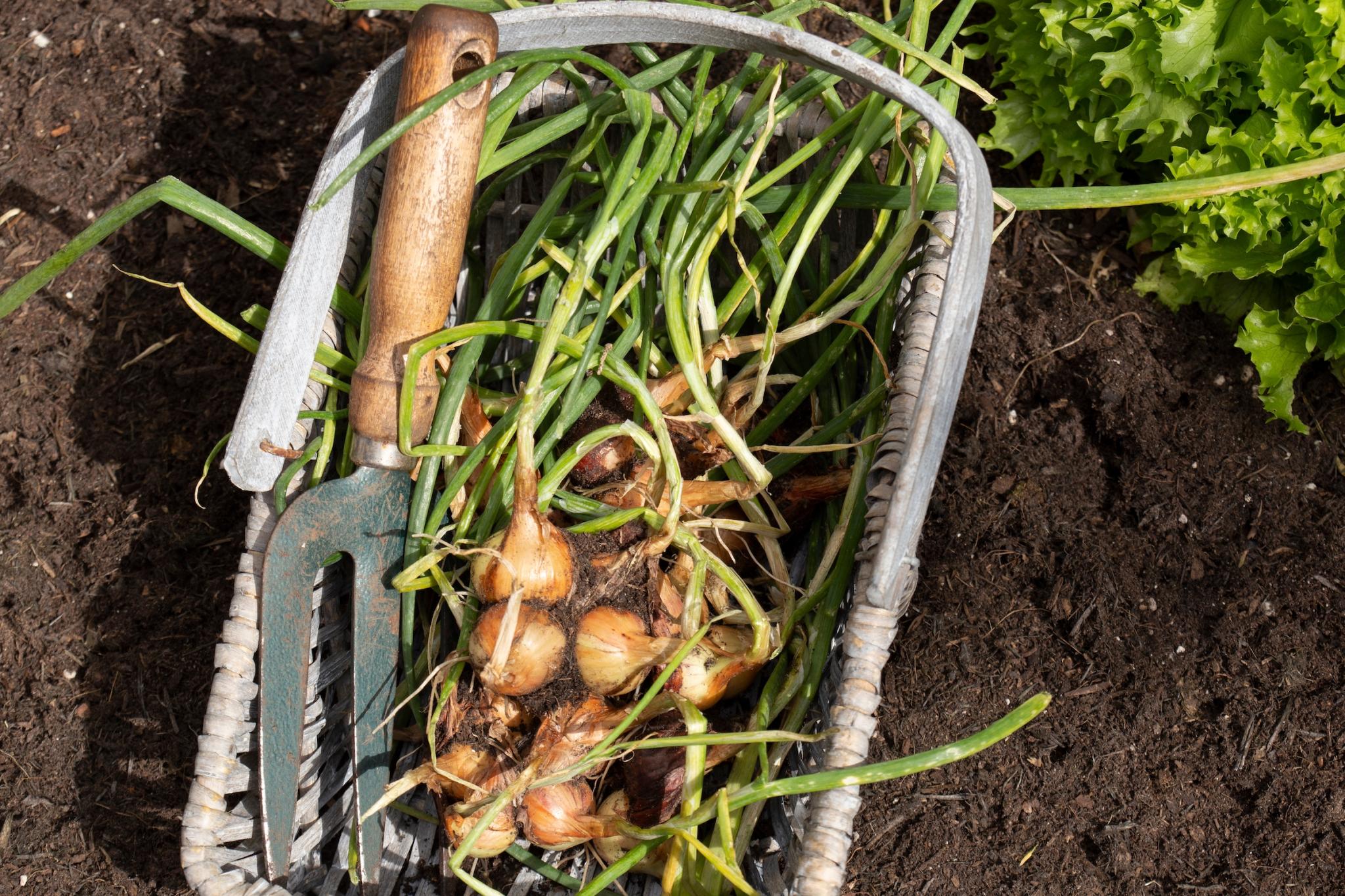
Photo Credit
Joanna Tkaczuk
Botanical Name
Allium spp.
Plant Type
Sun Exposure
Soil pH
Special Features
Subhead
Planting, Growing, and Harvesting Shallots
Read Next
Types
- ‘Ambition’ is a long-storing traditional French shallot.
- ‘Monique’ is a day-neutral shallot, perfect for those not gardening in the north. It produces one larger bulb and stores exceptionally well.
- ‘Gray Griselle’ is the traditional gray French shallot prized by chefs.
- ‘Pikant’ is an early shallot, often ready in as little as 80 days.

Gardening Products
Cooking Notes
Shallots can be used in almost any recipe that has onions if you want a sweeter, milder flavor. Be sure to use firm, dry shallot bulbs that are free of sprouts.
- For starters, try shallots sautéed in butter or olive oil with green beans or other leafy greens (e.g., Swiss chard, collards). Try this Green Bean with Shallots and Bacon recipe.
- Roasting is our favorite way to enjoy shallots! They become sweet, caramelized, and oh-so-tender.
More Like This
Still cannot print or save to my computer. You said will get the problem fixed! When I wonder? It's been many months now.
After much back-and-forth about fall vs. winter planting, the following appears: "A late fall harvest is ready in early summer. An early spring harvest is ready in late summer." Surely those sentences should have referred to *planting*, not harvest.
No Georgis. You PLANT in winter and HARVEST is early summer. That is correct. And it is great fun to plant as the weather turns cold and the garden looks so empty. It is delightful to see the green stems as spring arrives and to cut the scapes (and saute them) in June. Yummy and fun. Great crop for the northeast, especially on the rainy side of the Hudson.
ONly one verity of shallots grew ehrough the winter doing great in zone 5 my others did not survive what is the best shallot for fall planting in my zone I cover with 4-6 inches of straw in fall in remove as early as i see growth in spring your selection please












Comments